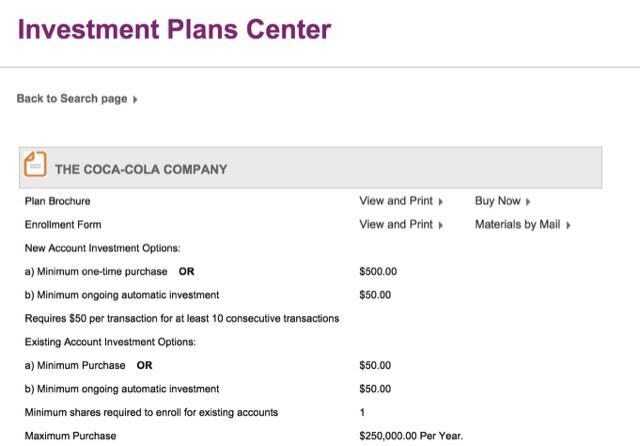So you've decided to start investing, and you're ready to buy. You call up a broker and find out that there are commissions, maintenance fees, account set-up fees, and per-trade fees of $150, $200, or even $400. You see your potential earnings quickly fading . . . and decide that it's time to invest without a broker.
There are a number of ways to do this. Of course, you're giving up a number of useful resources that a broker can provide, like personalized investing advice, access to just about any stock out there, and years of experience. However, if you're ready to go it on your own, you have options. Here are four ways you can buy stock online without a broker.
Direct Stock Purchase Plans
Direct stock purchase plans (DSPPs) allow investors to buy stocks directly from a company. They often have lower commissions than brokers, which could save you a lot of money over the course of a few years. They also have the big advantage of allowing you to invest in a specific dollar amount instead of choosing a number of shares. This allows you to own fractional shares, which still earn dividends.
These dividends can also be immediately reinvested (often for free) with a dividend reinvestment plan (DRIP), helping you to further increase your holdings in the company. Over 20 or 30 years, this can add up to a significant increase in the value of your investments—plenty of time to make a big difference in your retirement savings.
Some companies will allow anyone to purchase direct shares, but many require that you already own a share of their stock to invest in this manner. To become eligible, you can buy a single share through a broker, through a gift service like OneShare (see below), or through the Temper of the Times service.
After that, you'll need to find the shareholder services page of the company's website. There you'll be able to find details on fees and other information in the direct stock investment prospectus. In looking for DSPP / DRIP details on the Coca-Cola website, I found a link to Computershare, the group that administers their plan, where I found information on the plan, including fees, requirements, and limits.
Each company has their own regulations, so be sure to do as much research as possible before enrolling in a direct stock purchase plan. It's also a good idea to read up on direct investing so you know what the advantages are, what to look for when investing, and how to go about doing it. Here are a few resources to get you started:
- DirectInvesting.com
- "How to Invest Using Direct Stock Purchase Plans" from Forbes
- "How to Buy Stocks Online without a Broker - Direct Stock Purchase Plans" from Money Crashers
- Companies that offer DSPPs from Computershare
- DRIP Database
Buying Mutual Funds Directly
Some mutual funds can be purchased through brokers without a transaction fee, letting you avoid the potentially very expensive brokerage costs inherent in investing in mutual funds. However, if you already know which mutual fund you want to invest in, there's a good chance that you can invest in it directly from the fund provider.
Buying directly from the mutual fund company often doesn't have a commission, which can save a lot of money in the long run. You're getting the same shares in mutual funds without paying a broker—it doesn't get much better than that. Many mutual fund providers offer direct purchases, but not all of them, so you'll need to check with the one that you're looking to buy.
To buy into a mutual fund directly, you'll need to go to the website of the mutual fund company and open an account. After that, just follow the instructions on the company's website to make a purchase. There's often a minimum initial investment of $1,000 or more, but some companies will allow you to make a smaller investment if you set up an automatic monthly investment from your bank account.
Using a Stock Gift Service
There are a number of stock gift services that let you buy single shares of companies—they'll often send you a framed stock certificate, too, which is pretty cool (and can cost up to $500 from a brokerage). You don't need a broker to do it, and you can buy these shares either as gifts or for yourself.
The best way to use a stock gift service is to buy a single share to make yourself eligible for a direct stock purchase plan or a dividend reinvestment plan. Most DSPPs require that you own a single share, and buying one from a stock gift service will get you in the door. Some require more than that, in which case you might want to go through a broker or an online service.
OneShare, UniqueStockGift, GiveaShare, and SparkGift can all help you buy a single share to get on a DSPP or DRIP.
Use an Online Brokerage Service
Making a stock purchase through an online brokerage service, while technically still going through a broker, is a lot cheaper than going through a standard, full-service broker. In essence, you're becoming your own stock broker and using the service as an interface to the market where you're making the purchase.
There are many different online brokerage services: TD Ameritrade, E-trade, Capital One Investing, Scottrade, and OptionsHouse [Broken URL Removed] are some of the most well-known, but there are a lot of others out there as well.
These services don't offer nearly as much in the way of investing advice, but they're a lot cheaper. You'll have to read up on financial news on your own, and make sure to keep a close eye on stock prices, especially if you're looking to do some short-term trading (it may be a better idea to stick to long-term trading with online services like these, though).
Choosing an online broker can be difficult, but using a comparison tool like the one offered by StockBrokers.com can help you determine which is best for you.
Do Your Own Investing
Whether you're just learning to invest or you're an old pro, bypassing a broker and buying stocks on your own can be a great way to start or improve your portfolio. Make sure to do your research, and consider taking a beginner's investing course. After that, dive right in!
Have you used any of these methods to invest? Do you use a online brokerage firm? What have your experiences been? Share in the comments below!
Image credits: lassedesignen via Shutterstock.com, JohnKwan via Shutterstock.com, Microworks via Shutterstock.com.






